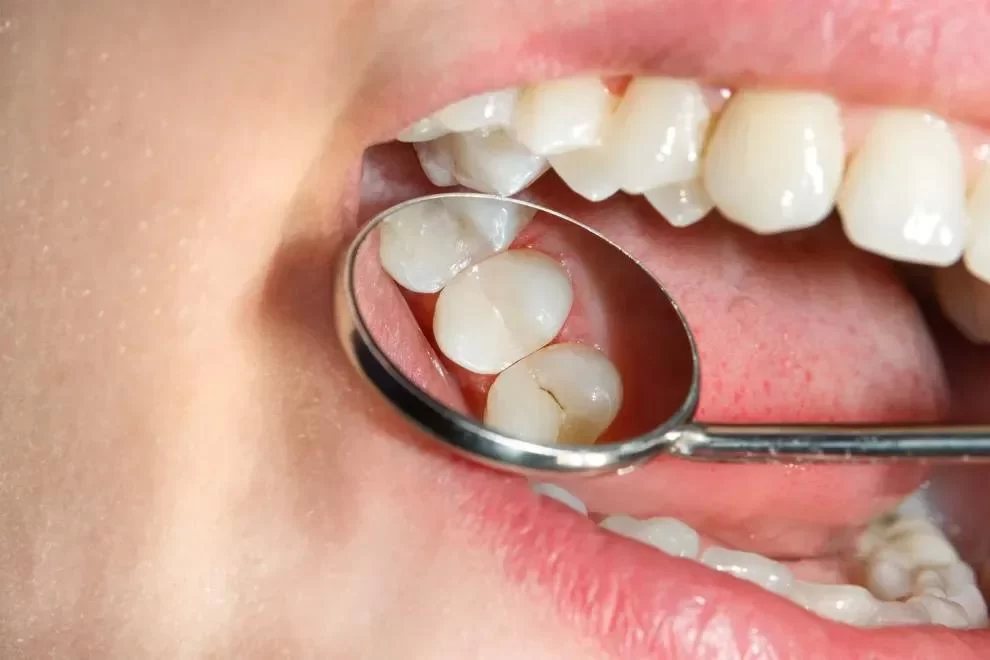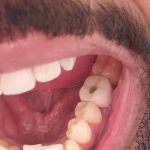
How to Effectively Treat a Cavity in a Molar Tooth: Complete Guide
- 1. What Causes Cavities in Molar Teeth?
- 2. How to Identify a Cavity in a Molar Tooth
- 3. Treatment Options for Molar Tooth Cavities
- 4. How to Prevent Cavities in Your Molar Teeth
- 5. When to See a Dentist for a Molar Cavity
1. What Causes Cavities in Molar Teeth?
Cavities in molar teeth are a common dental problem that can lead to severe tooth pain and further complications if not treated promptly. These cavities, also known as dental caries or tooth decay, are typically caused by a combination of factors:
- Poor Oral Hygiene: Inadequate brushing and flossing allow plaque—a sticky film of bacteria—to build up on your teeth. This plaque produces acids that attack the enamel of your molars, leading to cavities.
- Diet High in Sugar: Frequent consumption of sugary foods and drinks contributes to plaque buildup and provides bacteria with the fuel they need to thrive, which accelerates tooth decay.
- Not Enough Fluoride: Fluoride helps strengthen tooth enamel. Without it, your molars are more vulnerable to cavities.
- Dry Mouth: Saliva helps wash away food particles and bacteria. If your mouth is dry (due to medication or medical conditions), your teeth may be more susceptible to cavities.
If you’ve noticed a cavity in your molar, it’s likely the result of one or more of these factors. It’s important to act quickly to prevent further damage.
2. How to Identify a Cavity in a Molar Tooth
At the initial stages, cavities may not cause any noticeable symptoms. However, as they progress, you may begin to experience the following signs:
- Pain or Sensitivity: If you experience pain when chewing or drinking hot, cold, or sweet beverages, your molar cavity may be deepening.
- Visible Holes or Pits: In some cases, you may be able to spot a dark spot or hole in the surface of your molar.
- Bad Breath or Foul Taste: Persistent bad breath or an unpleasant taste in the mouth is often associated with an untreated cavity.
- Swelling or Abscess: In more severe cases, an abscess or swelling around the affected tooth may develop, which requires immediate professional treatment.
If you notice any of these symptoms, it’s crucial to visit your dentist as soon as possible to get a diagnosis and avoid further damage to the tooth.
3. Treatment Options for Molar Tooth Cavities
When it comes to treating a cavity in a molar tooth, the appropriate treatment will depend on the severity of the cavity. The main options include:
- Dental Fillings: The most common treatment for a cavity is to fill the hole in the tooth. Your dentist will remove the decayed portion of the molar and fill it with a durable material such as amalgam (silver-colored filling) or composite resin (tooth-colored filling).
- Root Canal Treatment: If the cavity has reached the pulp (the center of the tooth containing nerves and blood vessels), a root canal may be necessary. This procedure removes the infected pulp and fills the space to restore the tooth.
- Crowns: If the cavity is large and the tooth is severely weakened, your dentist may recommend a crown to cover and protect the tooth from further damage.
- Tooth Extraction: In extreme cases, when the tooth is too damaged to be saved, your dentist may recommend removing the molar to prevent the infection from spreading to other teeth.
Early treatment is essential to prevent the cavity from progressing to a more severe stage, where more complex treatments, such as a root canal, may be required.
4. How to Prevent Cavities in Your Molar Teeth
Prevention is always better than treatment when it comes to molar cavities. Here are some tips to help prevent cavities from forming in the first place:
- Brush and Floss Regularly: Brushing your teeth twice a day with fluoride toothpaste and flossing once a day removes plaque and food particles that contribute to cavities.
- Use Fluoride: Fluoride strengthens enamel and helps protect your teeth from decay. Consider using fluoride toothpaste or asking your dentist about fluoride treatments.
- Avoid Sugary Foods: Reducing the intake of sugary foods and drinks can help minimize plaque buildup and lower the risk of cavities.
- Visit Your Dentist Regularly: Regular dental checkups and cleanings allow your dentist to catch cavities early, before they cause significant damage.
By maintaining a proper oral hygiene routine and visiting your dentist regularly, you can significantly reduce the risk of cavities forming in your molar teeth.
5. When to See a Dentist for a Molar Cavity
If you suspect you have a cavity in your molar, it's essential to seek professional care. A dentist can diagnose the problem and recommend an appropriate course of treatment. Here are a few signs that indicate you should see your dentist:
- Persistent tooth pain, especially when chewing or drinking
- Visible holes or dark spots on your molars
- Swelling or an abscess around the affected tooth
- Bad breath or an unpleasant taste that doesn’t go away
Delaying treatment can lead to more severe dental problems and potentially require more invasive procedures, such as a root canal or extraction. For fast and effective solutions, visit Dentistry Toothtruth for more information on how to treat and prevent cavities.







 BGW Dental Group4.0 (292 review)
BGW Dental Group4.0 (292 review) Smile Dental Boutique | Mission Viejo Dentist4.0 (70 review)
Smile Dental Boutique | Mission Viejo Dentist4.0 (70 review) Comfort Dental Puyallup - Your Trusted Dentist in Puyallup4.0 (312 review)
Comfort Dental Puyallup - Your Trusted Dentist in Puyallup4.0 (312 review) Audubon Dental Associates Ltd5.0 (6 review)
Audubon Dental Associates Ltd5.0 (6 review) Dental Care 2000 Plus, West Foothill Boulevard, Monrovia, CA4.0 (17 review)
Dental Care 2000 Plus, West Foothill Boulevard, Monrovia, CA4.0 (17 review) Midlothian Family Dentistry4.0 (649 review)
Midlothian Family Dentistry4.0 (649 review) The Importance of Oral Health Education During Pregnancy for a Healthy Pregnancy
The Importance of Oral Health Education During Pregnancy for a Healthy Pregnancy Best Tips for Brushing Your Teeth Properly for Healthy Gums: Essential Techniques for Oral Health
Best Tips for Brushing Your Teeth Properly for Healthy Gums: Essential Techniques for Oral Health Why Skipping Dental Checkups Can Lead to Bigger Oral Health Problems
Why Skipping Dental Checkups Can Lead to Bigger Oral Health Problems Advantages of Porcelain Dental Restorations
Advantages of Porcelain Dental Restorations How Can Diabetes Cause Tooth and Gum Problems? Preventing and Managing Oral Health Issues
How Can Diabetes Cause Tooth and Gum Problems? Preventing and Managing Oral Health Issues Healthy Habits for Promoting Good Oral Health and Hygiene: Tips for a Healthy Smile
Healthy Habits for Promoting Good Oral Health and Hygiene: Tips for a Healthy Smile